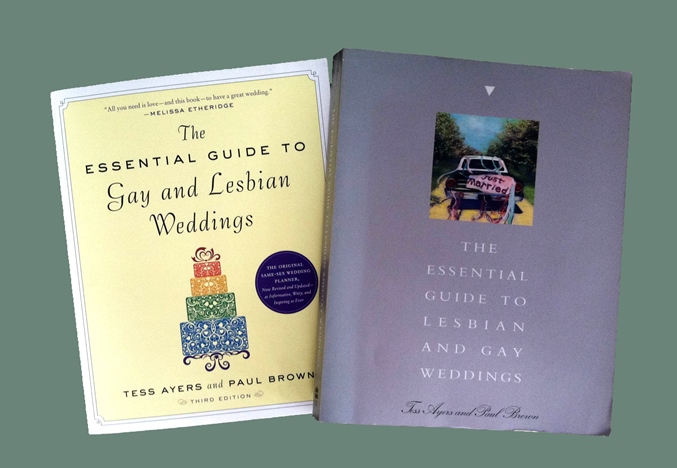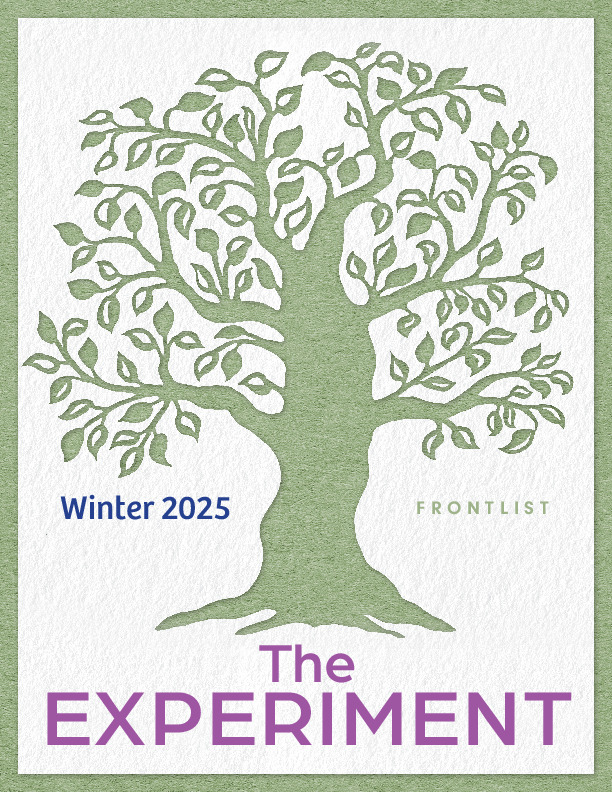
Right, the 1st edition of The Essential Guide to Gay and Lesbian Weddings, published in 1994 by Harper San Francisco. Left, the recent 3rd edition of the book published in 2012 by The Experiment.
I was at the American Library Association’s annual meeting in Chicago this past weekend, so I missed NYC’s annual LGBT Pride Parade on Sunday. Had I been here in New York, I would have turned out for the parade, most especially to cheer and salute this year’s grand marshal, Edie Windsor, the plaintiff in United States v. Windsor. Last week, of course, ruling on that case, the United States Supreme Court struck down the 1996 Defense of Marriage Act in a 5–4 decision, and in doing so legitimized the right to same-sex marriage, which (as of this moment) is legal in thirteen states and the District of Columbia.
In 1993, I was a marketing manager at Harper San Francisco (now HarperOne) when a far-sighted editor, Kandace Hawkinson, brought a guide to gay and lesbian weddings by first-time authors Tess Ayers and Paul Brown to the weekly “pub board” (where literally the entire staff—all forty or more of us—gathered to discuss the projects editors wanted to acquire). While I can’t tell you exactly what was said, I remember the vibe at that meeting as though it happened yesterday: Every one of us recognized that publishing such a book would be an act of faith that one day there would actually be gay and lesbian weddings.
That’s because in 1993, same-sex marriages were not legal anywhere in the United States. Yes, they were taking place—it was Tess’s own wedding in the summer of 1992 to Jane Anderson, her lover of ten years (and now partner of thirty), that had inspired the book (Paul had helped plan the wedding). But same-sex marriage wouldn’t become legal anywhere in the US for another ten years—until 2003, when Massachusetts became the first state to legalize it.
In the intro to the original edition of their book, which Kandace got the go-ahead to acquire and we Harper San Franciscans published in June 1994 as The Essential Guide to Lesbian and Gay Weddings, Tess and Paul wrote:
Now, this doesn’t mean that when we say “same-sex wedding,” we’re adding an asterisk after “wedding,” with a note of apology that it’s not really a wedding, that because same-sex marriages are not yet legal anywhere in the U.S., we’re going to take the posture of second-class citizens and make our celebrations “less than.” No, when we say wedding, we mean wedding. Yes, there are many styles of weddings, and you can pick and choose what you want to do. But since this is a wedding book, equivalent to the books that your straight friends might read, we have included everything that, in a different world, a better world, a more equal world, would be part of a gay wedding.
In other words, we approached this book as if same-sex marriage were suddenly legal.
Fast-forward eighteen years, to June 2012, by which time same-sex marriage had been legalized in seven states and Washington DC. The previous fall, I’d reconnected with Tess and Paul, and now we were publishing a third revised version of their book, which had never gone out of print (Alyson Books took it on in 1999 and then came out with a second edition in 2009). How fast the same-sex marriage landscape has continued to change: The very day we were sending our new edition to press in February 2012, the governor of Washington state was slated to sign a bill legalizing same-sex marriage (that had already been passed by both of Washington’s legislative houses) into law—but we held off on adding Washington to the count of legal states in the book as we weren’t 100 percent certain she would sign it. (She did.)
And now here we are. This past Sunday, Edie Windsor, as the Pride Parade’s grand marshal, was right where she should have been: accorded one of the highest honors the nation’s LBGT community has to bestow. But I’d like to take this moment to give a shout-out to Tess Ayers and Paul Brown, perhaps lesser known than Edie Windsor but no less deserving of recognition, for having had the far-sightedness to write a book a long time ago “as if same-sex marriage were suddenly legal.”



Pingback: Pride Week 2014 | The Experiment